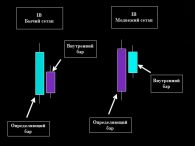Content
These drinkers consume alcohol less frequently and can come from families that don’t necessarily have a history of alcoholism. Treatment specialists and addiction professionals group people’s experiences sober house of alcoholism into groups to make treatment more personal and practical. After you answer the alcoholic survey, see how these different experiences might resonate with your relationship with drinking.
- Alcohol use disorder varies, but these symptoms are standard for those who have AUD.
- It is important to be specific about the problems in the employee’s performance and conduct and the particular incidents of concern.
- These drinkers consume alcohol less frequently and can come from families that don’t necessarily have a history of alcoholism.
- Setting a goal to limit how often you will drink and the number of drinks you will have can start you on the path to drinking less.
A substantial number of sexual offenders are chronic abusers of either alcohol or some other drug, or use one or another drug prior to or during their offensive behavior. Using the Michigan Alcoholism Screening Test (Selzer, 1971), Langevin and Lang (1990) found that 55.8% of sexual offenders scored within the alcoholic range. On the Drug Abuse Screening Test (Skinner (1982), Langevin and Lang (1990) found that 17.8% had a serious problem in the abuse of other drugs. These two measures adequately evaluate problems with alcohol or drug use, but it is also important for clinicians to attempt to discern the relationship between nonproblematic substance use and offending behavior. Many sexual offenders are more likely to abuse when they are somewhat intoxicated even if they do not characteristically have a substance-use disorder. The SMAST can be self-administered and can be used as an alternative to the CAGE questionnaire to detect alcohol abuse and dependence (Selzer et al., 1975).
Alcoholism Quiz
Compared with other biomarkers, MCV has low sensitivity but higher specificity for alcohol use. Because this test can detect previous alcohol exposure, even after a long period without alcohol consumption, it is not useful for monitoring abstinence in those recovering from AUD. EtG and EtS are direct minor metabolites of ethanol and are considered good markers of acute, short-term (up to 36 hours in the blood, up to 5 days in urine) alcohol ingestion. The sensitivity of these tests is highest in heavy drinkers but wanes after 24 hours and with lower doses. Results do not accurately correlate with the amount or frequency of ethanol use.
Is there a gene for alcoholism?
There is no one “alcohol gene” that leads to the development of an alcohol use disorder. Researchers have found more than 400 locations in all the genetic information in an organism (genome) and at least 566 variants within these locations that could influence the extent that someone may suffer from alcohol abuse.
The disease is so strong that the individual is unable to see what is happening to himself or herself. In any case, the appropriate course of action is to continue to hold the employee accountable for his or her performance and/or conduct, regardless of whether or not the employee has admitted an alcohol problem. However, when there are performance and conduct problems coupled with any number of these signs, it is time to make a referral to the EAP for an assessment so that the employee can get help if it is needed. Could any of the questions be slightly modified in order to improve sensitivity or specificity? Could the percentage of participants identified as positive or negative by the first screening item be increased? This was investigated in a further sample recruited from the waiting rooms of two A&E departments, at an inner city hospital and in a market town in South Wales.
The Symptoms of Alcoholism
As the loved one recovers from alcohol addiction, they may face significant stress and pressure. The loved one may inadvertently take some of those emotions and struggles out on friends and family, or they may have an additional strain on their shoulders as they try to help their loved one cope without alcohol. Loved ones of alcoholics should also seek therapy and support of their own.
- You can submit items at any time during the 5-year application period without additional fees.
- More than three-quarters of these individuals are from families plagued with multigenerational alcoholism.
In the meantime, you might want to cut back on how much, or how often you drink. Believe it or not, if you provided the same answers you gave on this quiz during a professional alcohol assessment, the evaluator would likely determine that you may have a mild alcohol use disorder. That is a long way from being diagnosed as an alcoholic, but there are some indications of problematic drinking. If your body has become dependent on alcohol, it is common to experience withdrawal symptoms when you stop drinking. How severe your withdrawal symptoms will be can depend on a number of factors including how long your drinking and how much you drank.
Short-Term and Long-Term Effects of Alcoholism
The full range of symptoms of alcoholism to watch out for 7 include the following. Individuals suffering from alcohol use disorder are likely to experience unpleasant withdrawal symptoms when they’re not drinking. This indicates that their brain biochemistry has been altered in a way that now relies upon alcohol to function “normally.” This is the physiological mechanism that creates an intense craving for alcohol. Luckily, there are ways to determine if a person’s drinking habit has drifted into an alcohol use disorder—i.e., a full-on alcohol addiction.
What is the best lab test for alcoholism?
- Indirect alcohol biomarkers include aspartate aminotransferase (AST), alanine aminotransferase (ALT), gamma glutamyltransferase (GGT), mean corpuscular volume (MCV), and carbohydrate-deficient transferrin (CDT).
- GGT, AST, and MCV are the most frequently used indirect biomarkers.
Your provider may also recommend a screening if they notice signs and symptoms of the disorder. If you worry that you might have a drinking problem or sometimes ask yourself, “Am I an alcoholic? According to recent national survey responses, fourteen million adults in the United States suffer from alcohol use disorder (AUD).



